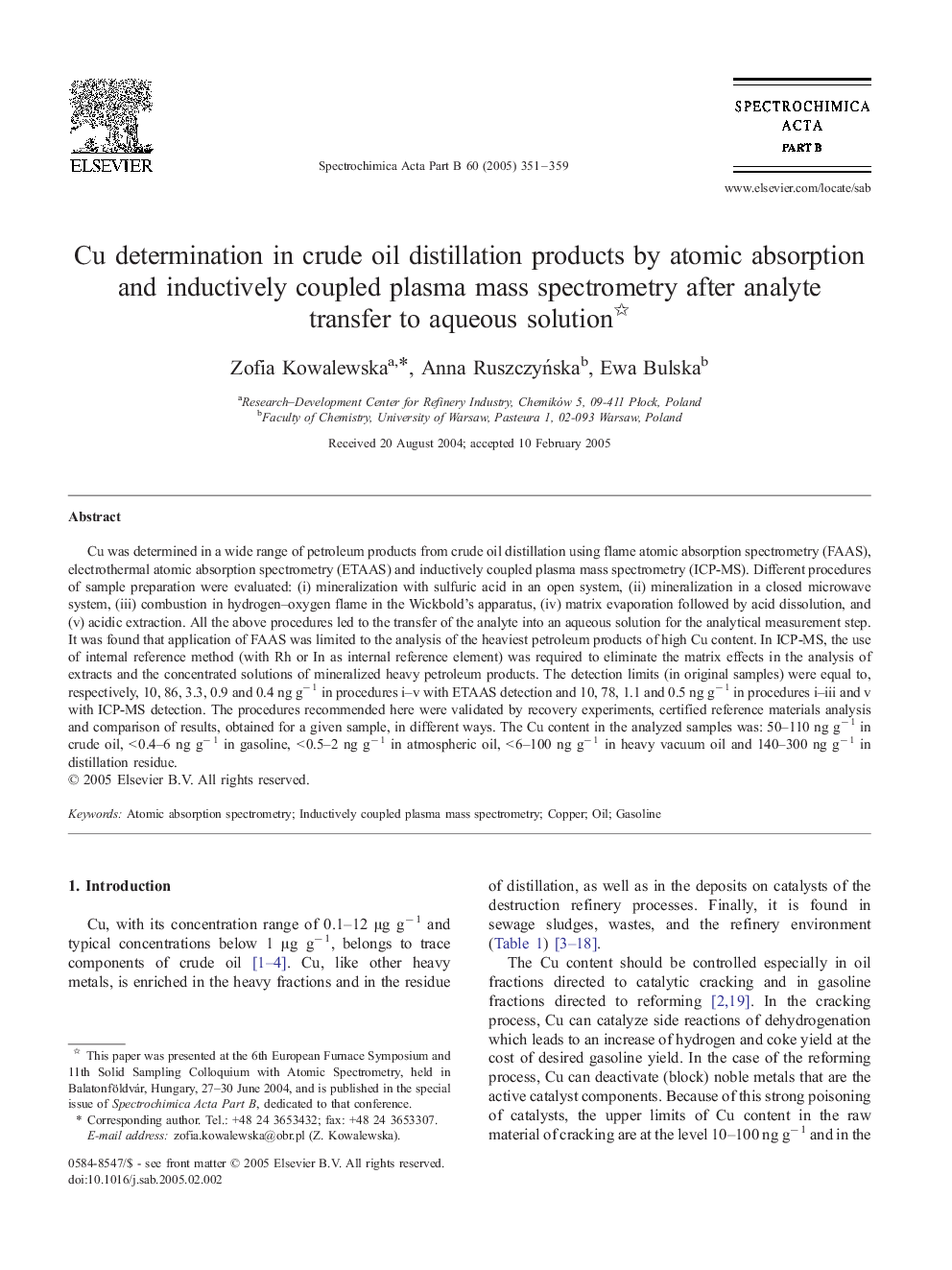| کد مقاله | کد نشریه | سال انتشار | مقاله انگلیسی | نسخه تمام متن |
|---|---|---|---|---|
| 10558574 | 969148 | 2005 | 9 صفحه PDF | دانلود رایگان |
عنوان انگلیسی مقاله ISI
Cu determination in crude oil distillation products by atomic absorption and inductively coupled plasma mass spectrometry after analyte transfer to aqueous solution
دانلود مقاله + سفارش ترجمه
دانلود مقاله ISI انگلیسی
رایگان برای ایرانیان
کلمات کلیدی
موضوعات مرتبط
مهندسی و علوم پایه
شیمی
شیمی آنالیزی یا شیمی تجزیه
پیش نمایش صفحه اول مقاله

چکیده انگلیسی
Cu was determined in a wide range of petroleum products from crude oil distillation using flame atomic absorption spectrometry (FAAS), electrothermal atomic absorption spectrometry (ETAAS) and inductively coupled plasma mass spectrometry (ICP-MS). Different procedures of sample preparation were evaluated: (i) mineralization with sulfuric acid in an open system, (ii) mineralization in a closed microwave system, (iii) combustion in hydrogen-oxygen flame in the Wickbold's apparatus, (iv) matrix evaporation followed by acid dissolution, and (v) acidic extraction. All the above procedures led to the transfer of the analyte into an aqueous solution for the analytical measurement step. It was found that application of FAAS was limited to the analysis of the heaviest petroleum products of high Cu content. In ICP-MS, the use of internal reference method (with Rh or In as internal reference element) was required to eliminate the matrix effects in the analysis of extracts and the concentrated solutions of mineralized heavy petroleum products. The detection limits (in original samples) were equal to, respectively, 10, 86, 3.3, 0.9 and 0.4 ng gâ 1 in procedures i-v with ETAAS detection and 10, 78, 1.1 and 0.5 ng gâ 1 in procedures i-iii and v with ICP-MS detection. The procedures recommended here were validated by recovery experiments, certified reference materials analysis and comparison of results, obtained for a given sample, in different ways. The Cu content in the analyzed samples was: 50-110 ng gâ 1 in crude oil, < 0.4-6 ng gâ 1 in gasoline, < 0.5-2 ng gâ 1 in atmospheric oil, < 6-100 ng gâ 1 in heavy vacuum oil and 140-300 ng gâ 1 in distillation residue.
ناشر
Database: Elsevier - ScienceDirect (ساینس دایرکت)
Journal: Spectrochimica Acta Part B: Atomic Spectroscopy - Volume 60, Issue 3, 31 March 2005, Pages 351-359
Journal: Spectrochimica Acta Part B: Atomic Spectroscopy - Volume 60, Issue 3, 31 March 2005, Pages 351-359
نویسندگان
Zofia Kowalewska, Anna RuszczyÅska, Ewa Bulska,